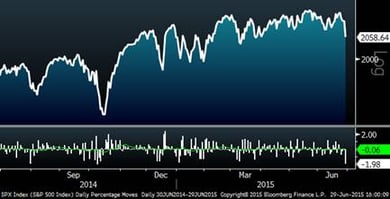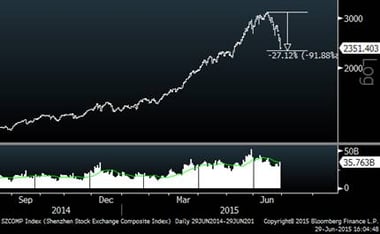Leap Second
On June 30th, there will be a leap second. Scientists need to do this every so often to syncronize atomic clocks with the slowing rotation of the earth. Some clocks will read 11:59:59 twice, others will read 11:59:60 and others still will smear the leap, as they call it. This seems simple enough, but last time this happened, Mozilla, Reddit, LinkedIn and other sites all reported crashes. In Australia, 400 flights were grounded due to a Qantas Airlines software crash.
As far as the markets go, this will be the first time in the electronic age that this will have been done during the week. It is happening at night time here, but apparently we are closing our afterhours trading early. In Asia, most systems are smearing the leap second by slightly adjusting each second in the day leading up to the event. A second doesn’t seem like much, but there are now computer trading systems that can react in as little as one-millionth of a second.
In one second:
- 1.4 million order messages are sent to U.S. equity-trading venues.
- $4.6 million in stocks are traded around the world, around the clock.
- $3.7 billlion in stocks trade hands in the major markets where the leap second will be at the opening bell.
- Four babies are born.
Market Today
There were lots of things taking place in the markets today. The main news over the weekend was that the Greek banks would not open today. This reverberated throughout the international markets, carrying over to the U.S. markets. Upon digesting this and other information, investors found little to encourage them to add risk today. As ugly as today was, it would be very unusual for an event with which everyone has already been concerned to derail the market. The serious derailments usually occur because of unexpected events not priced into the market.
In the end, the S&P 500 finished down 2%, which was the worst day of the year, and every single stock in the Dow Jones Industrial Average was down. This said, there was support in REITS/utilities and coal stocks. While this seems bad, today’s move is minimal compared to what we regularly experienced in 2008-2009 or other truly tumultuous times. Not surprisingly, Treasury rates were down today as investors fled to safety by buying government bonds.
S&P 500 (One Year)

China
In the past two weeks, the Shenzhen Composite (below) is down a whopping 27%. This said, the index is only back to levels reached in May. While these types of moves are not uncommon in the Chinese markets, the recent volatility is still unsettling for investors who consider China to be a barometer of the world economy.



